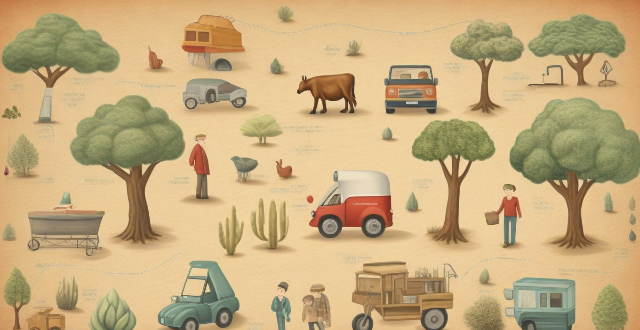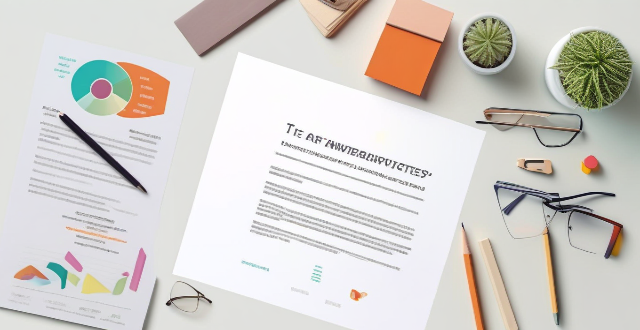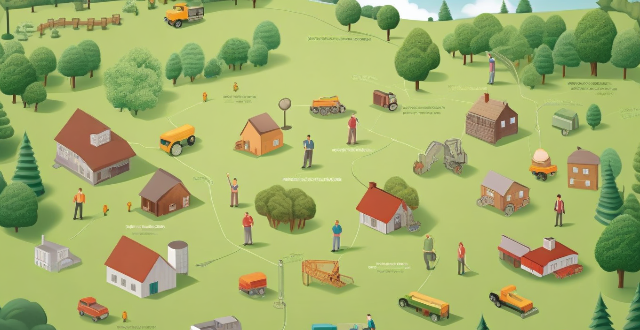Refund Country

How long does it typically take to receive a tax refund after leaving a country ?
Leaving a country can be a stressful process, and one of the concerns that many expatriates have is how long it will take to receive their tax refund. The answer to this question depends on several factors, including the country you are leaving, your residency status, the method of application, and the time of year. By following best practices such as filing electronically, providing complete information, following up with tax authorities, and considering professional help, you can help speed up the process and receive your refund more quickly.

Can I get a tax refund if I'm not a resident of the country where I shopped ?
Non-residents can claim tax refunds for purchases made abroad, but must meet certain criteria and follow specific procedures. Eligibility usually requires buying goods for personal use and taking them out of the country within a set time frame. Documentation such as receipts and invoices is crucial for proving eligibility. Tax refund forms can be obtained from stores or airports and must be completed with personal and purchase details. Customs officials stamp these documents to verify export of the items. Submission of stamped documents to the appropriate authority initiates the refund process, which may result in direct deposit or mailed refunds. Successful tax refund claims depend on adhering to these steps and retaining all necessary paperwork.

Is there a minimum purchase amount to qualify for a tax refund ?
The minimum purchase amount for tax refunds varies by country and product type. Other requirements include timeline, product type, receipts, and departure within a specific time frame. To claim a refund, save receipts, fill out forms, visit a customs office, submit documentation, and wait for the refund to be processed.

What is a tax refund for shopping ?
The article provides a comprehensive guide on what a tax refund for shopping is, how it works, its benefits, and tips for successful claims. It explains that a tax refund for shopping allows tourists to reclaim some of the Value Added Tax (VAT) they have paid on purchases made during their trip abroad. The process involves keeping receipts, meeting minimum purchase amounts, obtaining tax-free forms, customs declaration, and claiming refunds. The article also highlights the benefits of tax refunds, including savings, additional discounts, and convenience, and offers tips for successful claims such as planning ahead, organizing documents, allowing enough time, and double-checking amounts.

Can I claim a tax refund on online purchases when traveling abroad ?
Can I Claim a Tax Refund on Online Purchases When Traveling Abroad? When traveling abroad, it is possible to claim a tax refund on certain online purchases. However, the process and requirements can vary depending on the country you are visiting and the specific policies of the retailer or e-commerce platform. In this article, we will explore the different factors that can impact your ability to claim a tax refund on online purchases when traveling abroad. Key Factors to Consider: 1. Country-Specific Policies 2. Retailer or E-Commerce Platform Policies 3. Product Type 4. Purchase Amount 5. Timeline Steps to Claim a Tax Refund on Online Purchases: 1. Research Tax Refund Policies 2. Check Product Eligibility 3. Meet Minimum Purchase Requirements 4. Save Receipts and Documentation 5. Fill Out Tax Refund Forms 6. Submit Documentation and Receive Refund

How does the tax refund process work in Europe ?
The Tax Refund Process in Europe is a guide for tourists on how to get a Value Added Tax (VAT) refund when shopping in the European Union. The VAT rate varies by country and ranges from approximately 15% to 27%. To be eligible for a VAT refund, you must be a non-EU resident, goods must be for personal use, purchases must be taken out of the EU within three months of the issue date on the receipt, and there is usually a minimum purchase amount per store to qualify for a refund. The steps involved in getting a VAT refund include making the purchase, obtaining the VAT refund form, validation at the point of departure, submitting the form, and receiving your refund. Additional tips include keeping all original receipts and forms until you have received your refund, being aware of processing fees, and using direct VAT refund services offered by some stores.

What documents are required to apply for a shopping tax refund ?
The text is a topic summary for "Required Documents for Shopping Tax Refund Application." It lists the necessary documents needed to apply for a tax refund, including a passport or travel document, receipts and invoices, a tax-free form, credit card or bank statement, boarding pass or flight itinerary, customs declaration form, and shipping documents (if applicable). The text also mentions that once all the required documents are gathered, the tax refund application can be made at the airport or through the designated tax refund office in the city where purchases were made.

Are there any advantages to using a tax refund service company instead of doing it myself ?
Using a tax refund service company offers several advantages, including time-saving, accuracy, expertise, convenience, and peace of mind. These services can help maximize refunds or minimize tax liability by ensuring accurate tax preparation and staying up-to-date with changing tax laws and regulations.

How can I calculate the estimated tax refund for my purchases ?
To calculate an estimated tax refund for purchases, followTo calculate an estimated tax refund for purchases, follow sales tax rate, calculate the and subtract any applicable tax credits or deductions from the total sales tax paid to estimate the refund. Consult a tax professional for accurate information.

Can I get a refund for an app I purchased on the App Store ?
You can request a refund for an app you purchased on the App Store, but there are certain conditions that must be met in order to qualify. You have 14 days from the date of purchase to request a refund, and the app must not have been downloaded or launched more than twice. You must also provide a valid reason for your request. To request a refund, open the App Store app on your device, tap on your profile picture in the top right corner, select "Purchase History" from the drop-down menu, find the app for which you want to request a refund and tap on it, tap on "Report" next to the app, and follow the prompts to submit your refund request. Be honest and clear about why you are requesting a refund, provide any relevant information or screenshots that support your request, and keep track of your purchase history to make sure you meet the eligibility criteria before submitting your request.

Can I still get a tax refund if I have a connecting flight within the EU ?
To obtain a tax refund when you have a connecting flight within the EU, follow these steps: purchase goods in a participating store, complete the tax-free shopping form, obtain a customs stamp, and claim your tax refund. Having a connecting flight does not affect your ability to get a tax refund.

What do I need to know about VAT refunds when traveling internationally ?
VAT (Value Added Tax) is a consumption tax applied on products or services purchased within a country. International travelers may be eligible for a VAT refund if they purchase goods to take out of the country where they made the purchase, often referred to as "tax-free shopping". To get a VAT refund, travelers must check eligibility, get tax-free forms, keep receipts, procure documents from customs, claim their refund, and be aware of time limits, minimum purchase amounts, fees, and currency conversion. Tips for successful VAT refunds include planning ahead, consolidating purchases, tracking deadlines, verifying retailer participation, and consulting with experts. By understanding the VAT system and following these guidelines, international travelers can potentially save money on their shopping experiences.

Is there a difference in the tax refund process between goods for personal use and commercial resale ?
The tax refund process for goods varies based on whether they are purchased for personal use or commercial resale. Personal use items may qualify for tax-free shopping, deductions as expenses, or retail returns. Commercial resale goods often benefit from sales tax exemptions, input tax credits, export refunds, and inventory write-offs. The key differences include sales tax treatment, deduction eligibility, refund mechanisms, and documentation requirements.

What are the economic implications of pursuing carbon neutrality for a country ?
Pursuing carbon neutrality has both positive and negative economic implications for a country, including job creation, innovation, energy independence, short-term costs, impacts on traditional industries, and potential carbon leakage.
![What are some must-try dishes in [insert city/country] ?](/imgs/2f8b31ee-f62a-46e3-8828-37a4af062f9b.png)
What are some must-try dishes in [insert city/country] ?
Must-Try Dishes in [Insert City/Country]: A Culinary Journey When exploring the culinary delights of a new city or country, it's always exciting to try local dishes that showcase the unique flavors and ingredients of the region. In this article, we will delve into some must-try dishes in [insert city/country]. The first dish on our list is [dish name], known for its rich and flavorful taste. It typically consists of [ingredients/preparation method] and is a perfect representation of the local cuisine, offering a blend of traditional spices and fresh ingredients. Next up is the popular dish [dish name], made with [ingredients/preparation method]. This dish is not only delicious but also visually appealing, making it a feast for both your taste buds and eyes. Another unique dish found in [insert city/country] is [dish name], characterized by its [ingredients/preparation method]. This dish offers a unique twist on traditional [insert city/country] cuisine, combining familiar flavors with unexpected ingredients. Last but not least is the beloved dish [dish name], featuring [ingredients/preparation method]. This dish is a true representation of [insert city/country]'s street food culture, offering a quick and tasty snack for locals and tourists alike. In conclusion, [insert city/country] offers a wide variety of must-try dishes that cater to different tastes and preferences. From traditional staples to unique twists on classic recipes, there's something for everyone to enjoy. So next time you find yourself in [insert city/country], be sure to give these dishes a try!

In what ways do immigration policies affect the cultural diversity of a country ?
Immigration policies play a significant role in shaping the cultural diversity of a country. Policies that promote multiculturalism, facilitate family reunification, and provide opportunities for legal migration can enhance cultural diversity. In contrast, strict immigration controls, deportation policies, and anti-immigrant sentiments can hinder it.

Do I need a visa if I'm only staying in the country for a few hours ?
Do I Need a Visa If I'm Only Staying in the Country for a Few Hours? Traveling to a foreign country often involves understanding the visa requirements, even if your stay is only for a few hours. The need for a visa depends on factors such as the purpose of your visit, the duration of your stay, and the specific regulations of the country you are visiting. Some countries offer visa exemptions for brief transit stays, especially if you remain in the airport and do not enter the country's territory. For business meetings or other activities that require leaving the airport, a visa may be necessary regardless of the duration. Countries often have specific rules for visits shorter than 24 hours or even up to 90 days, which may affect visa requirements. Generally, if your stay exceeds the short-term visit limit, a visa will be required. Some countries have agreements that allow citizens of certain nations to enter without a visa for short periods. For layovers or connecting flights, some countries issue transit visas that allow limited time within the country or its airports. To determine visa requirements, research the country's visa policy, consult with the airline, check travel advisories, and contact the embassy directly if unsure. Whether you need a visa for a short stay largely depends on the country's immigration policies and the purpose of your visit. It is essential to research and understand these requirements before traveling to avoid any complications at border control.

What happens if I don't declare all the cash I'm carrying when entering a country ?
The text provides a comprehensive overview of the potential penalties and inconveniences that may arise from not declaring cash at customs when entering a country. These include fines, seizure of funds, travel restrictions, administrative inconvenience, and loss of face. To avoid these consequences, it is recommended to be honest about the amount of cash carried, keep receipts, research regulations, and consult professionals if necessary.

What is the difference between a duty-free and tax-free purchase ?
The difference between a duty-free and tax-free purchase is that the former is exempt from customs duties, typically made in international travel hubs, while the latter is exempt from sales tax or VAT, can be made anywhere within a country.

Are the items in a sample sale returnable or exchangeable ?
Sample sales can have various return and exchange policies. Some items are final sale, while others may have limited return periods or require the item to be in original condition for returns. Some retailers offer only store credit instead of refunds, and others allow exchanges but no refunds. It's important to know the specific policies before purchasing to avoid disappointment later on.

How do competitive sports contribute to the growth of a country's economy ?
Competitive sports significantly contribute to a country's economic growth by boosting tourism, creating jobs, generating media and advertising revenue, diversifying the economy, improving social welfare, enhancing urban development, and attracting foreign investments. Major sporting events not only provide temporary employment but also stimulate long-term infrastructure development and technology innovation. Moreover, they foster national unity and health benefits, indirectly contributing to economic stability. Overall, competitive sports are instrumental in showcasing a country's potential on a global scale, leading to numerous economic advantages.
![Are there any travel warnings or advisories that I should be aware of before planning a trip to [insert destination] ?](/imgs/2f8b31ee-f62a-46e3-8828-37a4af062f9b.png)
Are there any travel warnings or advisories that I should be aware of before planning a trip to [insert destination] ?
Before planning a trip to [insert destination], itBefore planning a trip to [insert destination], it of any travel warnings or it is important to be aware of any travel warnings or advisories that may affect your safety and well-being. Here are some steps you can take to ensure a safe and enjoyable trip: 1. Check the government website of the country you plan to visit for an overview of the current situation and any travel warnings or advisories that have been issued. 2. Research local news sources in the destination country to get a better understanding of the current situation and any potential risks. 3. Contact your embassy or consulate directly if you have any specific concerns about traveling to the destination country. 4. Consider purchasing travel insurance to provide coverage for unexpected events such as medical emergencies, trip cancellations, or lost luggage. By following these steps, you can ensure a safe and enjoyable trip while minimizing any potential risks.

How do immigration policies affect the demographics of a country ?
Immigration policies significantly impact a country's demographics, including population size, age distribution, ethnic composition, and socio-economic characteristics. Open borders can lead to population growth and younger demographics, while restrictive policies may result in slower growth or aging populations. Ethnic diversity is influenced by the selection of immigrants based on nationality or skill set. Socio-economic attributes are shaped by the educational background and employment opportunities for immigrants, affecting labor markets and economic performance. Countries like the U.S., Canada, and Australia have seen positive demographic shifts due to their immigration policies, while others like Japan and Hungary face challenges related to population dynamics and diversity.

How do sports boycotts or bans reflect on international relations ?
Sports boycotts or bans are often used as a political tool to express disapproval or to exert pressure on another country. These actions can have significant implications for international relations, as they can be seen as a form of diplomatic action. This essay explores how sports boycotts or bans reflect on international relations and the potential consequences that may arise from such actions. Sports boycotts or bans are often used as a form of protest against perceived injustices or violations of human rights, political disagreements, or other issues that may affect international relations. Historical examples include the African nations' boycott of the 1972 Summer Olympics due to Rhodesia's inclusion, the US-led boycott of the 1980 Summer Olympics in Moscow to protest the Soviet Union's invasion of Afghanistan, and calls for sports boycotts against China over its treatment of Uighur Muslims in Xinjiang province. Sports boycotts or bans can create diplomatic tensions between countries, leading to further escalation of conflicts. They can also have economic consequences for both the host country and participating athletes, as well as limit opportunities for cultural exchange and global unity. As such, it is important for countries to carefully consider the potential consequences before engaging in sports boycotts or bans as a form of political protest.

How do economic indicators differ between developed and developing countries ?
Economic indicators reflect the health and performance of a country's economy, with significant differences between developed and developing countries. Developed countries typically have higher GDP and GDP per capita values, lower inflation rates, more robust social safety nets, and attract high levels of foreign direct investment (FDI). They also score high on the Human Development Index (HDI), have more balanced trade positions, and while income inequality exists, there are often stronger welfare systems to mitigate its effects. On the other hand, developing countries often have lower GDP and GDP per capita, higher inflation rates, less developed social safety nets, and receive less FDI due to perceived risks. They also tend to have lower HDI scores, struggle with trade deficits, and face more pronounced income inequality. However, it is important to note that each country is unique and may exhibit characteristics that do not strictly align with typical developed or developing country traits. Economic indicators should always be considered within the context of a country's specific circumstances.

What are some traditional holiday dishes in your country ?
The text describes the traditional holiday dishes in the author's country. The dishes are an integral part of cultural heritage and are enjoyed by families and friends during festive celebrations. The author mentions four holidays: Thanksgiving, Christmas, Easter, and Halloween. For each holiday, the author lists popular dishes that are commonly served. The dishes include roasted turkey, mashed potatoes, gravy, green bean casserole, sweet potato casserole, cranberry sauce, pumpkin pie, roast beef or ham, cranberry relish, scrambled eggs, bacon, hash browns, pancakes, fruit salad, candy bars, caramel apples, popcorn balls, ghostly cupcakes, spiced cider, and hot chocolate. The author concludes by stating that these traditional holiday dishes are important for celebrating special occasions and bring families together.

Which country has won the most FIFA World Cup titles ?
The country that has won the most FIFA World Cup titles is Brazil, with a total of five (5) titles. The Brazilian national football team is widely considered one of the most successful in the history of the sport. Other countries that have achieved significant success in the World Cup include Germany, Italy, Argentina, and Uruguay.

How do I plan a cross-country cycling route ?
Planning a cross-country cycling route involves determining the starting and ending points, choosing a suitable route, planning daily mileage, booking accommodations/campsites, and packing necessary gear. Factors to consider include distance, terrain, weather conditions, safety concerns, travel restrictions, fitness level, budget, and preferences. Tools like Google Maps, Bikely, or Komoot can help customize the route based on distance, elevation gain, and surface type. Aim for 50-70 miles per day if experienced or 30-40 miles if new to long-distance cycling. Pack spare tubes, pump, multi-tool, first aid kit, food, water, and appropriate clothing for expected weather conditions.